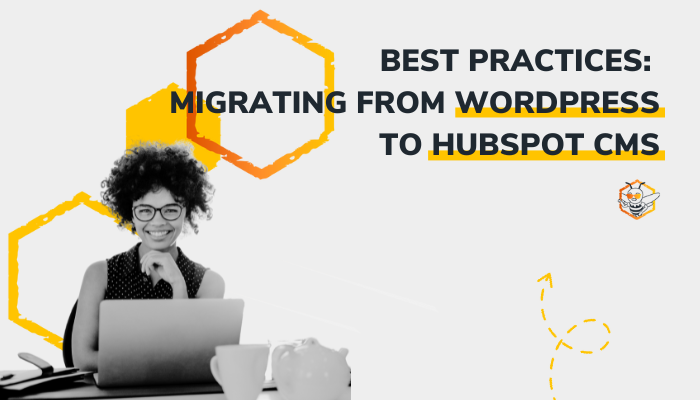Migrating a WordPress website to HubSpot CMS is an intricate yet crucial project, especially for those who have successfully climbed the ranks of Google's SERPs. This task demands meticulous attention to detail and a strategic approach to avoid any mishaps that could reverse hard-earned SEO gains.
If you want to make it easier on yourself, you can always take advantage of our HubSpot Migration services. Not only will we migrate your website to HubSpot, but we'll make sure your team is trained and ready to take on your new CRM. We can also work with you to build a robust inbound marketing strategy that maximizes the power of HubSpot.
This comprehensive guide is tailored to assist both marketing professionals and technical experts in navigating the migration process smoothly, safeguarding your website's organic performance. Whether you choose to undertake this internally or outsource to seasoned experts, the process outlined here will guide you through each crucial step:
- Document Your WordPress Site
- Capture Your SEO Rankings
- Export 301 Redirect Settings
- Adapt Content in HubSpot CMS
- Choose a HubSpot CMS Theme
- Implement 301 Redirects in HubSpot
- Rigorous Testing
- The Big Launch
- Notify Google Search Console
Step 1: Document Your WordPress Site
Initiate by downloading your current WordPress site's sitemap, typically found at "yourwebsite.com/sitemap.xml." Gather all the sitemaps on this page into one comprehensive spreadsheet. This will serve as a roadmap, outlining the transition from the live WordPress URLs to their new counterparts on HubSpot CMS. Document each step meticulously to avoid any oversights during the migration.
Step 2: Capture Your SEO Rankings
Have your SEO specialist document the current rankings of each page and keyword, focusing on indexed pages and blog posts. This step will help prioritize the migration, allowing you to identify non-ranking pages for potential improvement or removal.
Step 3: Export 301 Redirect Settings
Your WordPress 301 redirect settings, usually adjusted via a plugin or the ".htaccess" file, are critical. If your team is large and frequently edits the site, it’s advisable to halt all major updates during this migration.
Step 4: Adapt Content in HubSpot CMS
Post-migration, check that all images and anchor links have been correctly transferred to HubSpot. HubSpot's unique functionality allows anchor links to reference a page, automatically updating URLs site-wide whenever changes are made. This feature not only simplifies maintenance but also strengthens your site's SEO resilience.
Step 5: Choose a HubSpot CMS Theme
Select a user-friendly, adaptable, and visually appealing theme that simplifies post-launch website management. The Cell HubSpot Theme by HIVE Strategy is an excellent choice, offering flexibility and ease of use.
Step 6: Implement 301 Redirects in HubSpot
Upload the 301 redirects you compiled in WordPress to your HubSpot settings. This step is vital for maintaining your SERP positions by preventing broken links post-migration.
Step 7: Rigorous Testing
Conduct thorough testing across various user profiles within your organization. Different perspectives can uncover unique issues, ensuring a comprehensive review of the new site.
Step 8: The Big Launch
Transitioning to HubSpot CMS involves a DNS migration, connecting your domain to HubSpot. This critical phase must be meticulously planned, considering factors like domain root settings and SSL certificates. A recommended time for migration is late at night, minimizing disruption.
Step 9: Notify Google Search Console
After a successful migration and final checks, submit your new sitemap to Google Search Console. Conduct a detailed site audit using tools like SEMRush or Screaming Frog to ensure all is in order. Once confident, use the URL inspection tool in Google Search Console to prompt the reindexing of your key pages.
Migrating from WordPress to HubSpot CMS is not just a technical shift; it's a strategic move towards a more robust and scalable digital presence. Having a well-thought-out plan is paramount in ensuring a smooth transition. This comprehensive guide aims to equip you with the insights and steps needed to navigate this journey effectively. Once migrated, you'll find yourself with a website that not only aligns better with your business goals but also offers a stable and scalable platform.



.png?width=100&height=100&name=The%20Complete%20Guide%20to%20HubSpots%20Prospecting%20Agent%20(2025%20Edition).png)

.png?width=100&height=100&name=Why%20Were%20Not%20a%20Marketing%20Agency%20(And%20What%20That%20Means%20for%20Your%20Growth).png)